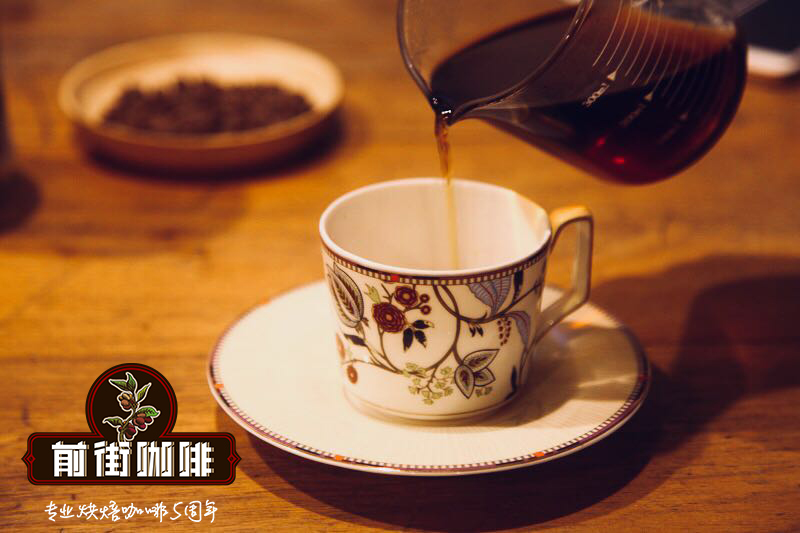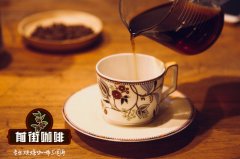Coffee bean subspecies is a variety of coffee beans that you have heard of but do not know, Kaddura coffee beans are slightly inferior?

Professional coffee knowledge exchange more coffee bean information please follow the coffee workshop (Wechat official account cafe_style)
Qianjie-introduction of coffee bean subspecies and Kaddura coffee varieties
Coffee trees belong to the genus Coffee of angiosperms, dicotyledons, Rubiaceae and Rubiaceae in botany. It's very talkative! There are about 70 tree species in the genus Coffee, but only two are available for commercial use. They are commonly known as "Arabica" and "Robusta" species. Listen up! The species mentioned here are tree species, or simply "species", not varieties. The correct ranking should be: species-variety-cultivated varieties (or "subspecies" that can only be seen in specific producing areas).
There are so many subspecies that sometimes planting in another place or artificial breeding can be called a new subspecies. The concept of subspecies is a bit like Corky and Chai Dog. Although they look a little different, they are all dogs. I believe everyone can casually name more than a dozen different breeds of dogs, so it is the same with coffee. The biggest categories under Arabica are iron pickup and bourbon.
Iron pickup is the most common bean species, the new leaves are reddish brown, the disease rate is very low, while bourbon, the new leaves are green, the fruit is smaller than tin pickup, usually red, but there are some orange and yellow, so it is called red bourbon, orange bourbon or yellow bourbon.
Kaddura (Caturra), a natural variety of Arabica variety bourbon, was discovered in Brazil in 1937. Its tree is not as tall and shorter as bourbon. Due to inheriting the blood of bourbon, the resistance is relatively weak, but the yield is higher than that of bourbon. Although found in Brazil, Kaddura is not suitable for growing in Brazil, so it is not planted on a large scale in Brazil, but is popular in Central and South America, such as Colombia, Costa Rica and Nicaragua. Kaddura is widely planted in Brazil.
Kaddura is suitable for planting in the high altitude area from 700m to 1700 m. The adaptability to altitude is very strong. The higher the altitude, the better the flavor, and the production capacity is relatively reduced. This is the fate of fine beans. In academic circles, some people call Kaddura the bourbon of dense and exposed version, which can be said to hit the nail on the head. There is also a variety of yellow Kaddura (Caturra Amarello) in Central and South America, but the wind rating is not as good as Huang bourbon.
When Kaddura is slightly roasted, the sour aroma is obvious and the whole is bright. If handled properly, the sweetness can be very good, but the mellowness of the coffee is relatively low compared with bourbon, and the taste is a little less clean.
Knowledge: its adaptability is strong, do not need shade trees, direct exposure to the sun can also be full of vitality, known as exposure coffee (Sun Coffee), can adapt to high-density planting, but must apply more fertilizer, increase the cost, so the initial acceptance of coffee farmers is not high.
In short: Qianjie is a coffee research hall, happy to share the knowledge about coffee with you, we share unreservedly just to make more friends fall in love with coffee, and there will be three low-discount coffee activities every month. The reason is that Qianjie wants to make more friends drink the best coffee at the lowest price, which has been Qianjie's tenet for 6 years!
END
Important Notice :
前街咖啡 FrontStreet Coffee has moved to new addredd:
FrontStreet Coffee Address: 315,Donghua East Road,GuangZhou
Tel:020 38364473
- Prev

What's rough and wild in Rwandan coffee? Rwandan coffee tastes more than you can imagine.
Professional coffee knowledge exchange more coffee bean information please follow the coffee workshop (Wechat official account cafe_style) front street-Luwang Coffee introduction the Republic of Rwanda is located in East Central Africa near the equator, is a small mountainous country in Central Africa. It is bordered by Uganda in the north, Tanzania in the east, Burundi in the south and Congo in the west. Colonization before 1962
- Next

Are the three kinds of coffee beans familiar? typica coffee beans are the ancient flavor of the coffee world.
Professional coffee knowledge exchange more coffee bean information please follow the coffee workshop (Wechat official account cafe_style) front street-three major coffee bean species, iron pickup coffee varieties introduce the coffee tree is a small shrub growing in cold areas, the fruit is white or yellow. The big core of this fruit is coffee beans. At present, coffee beans are grown in 66 countries, and they are divided into three main categories: Arabica,
Related
- Beginners will see the "Coffee pull flower" guide!
- What is the difference between ice blog purified milk and ordinary milk coffee?
- Why is the Philippines the largest producer of crops in Liberia?
- For coffee extraction, should the fine powder be retained?
- How does extracted espresso fill pressed powder? How much strength does it take to press the powder?
- How to make jasmine cold extract coffee? Is the jasmine + latte good?
- Will this little toy really make the coffee taste better? How does Lily Drip affect coffee extraction?
- Will the action of slapping the filter cup also affect coffee extraction?
- What's the difference between powder-to-water ratio and powder-to-liquid ratio?
- What is the Ethiopian local species? What does it have to do with Heirloom native species?

